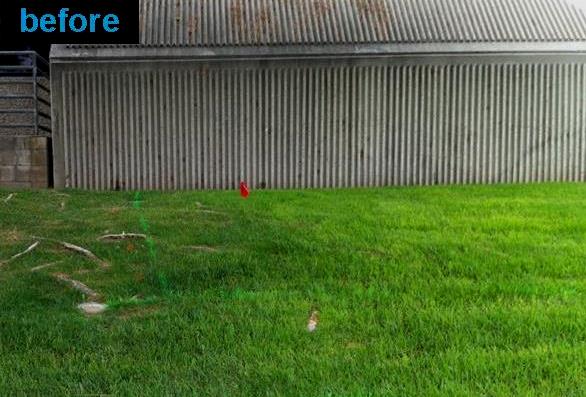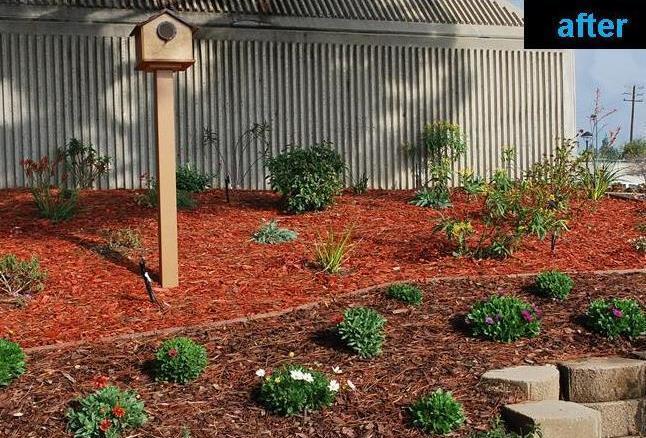Water Conservation
Water is one of our greatest natural resources. Years of drought have caused local aquifers and regional water sources to deplete significantly. As residents we are responsible to conserve and not waste water.
In July 2021, Governor Newsom issued an executive order requesting that Californians cut their water use by 15% in response to the state drought emergency. To learn how to conserve water and save money in the process, visit the State Waterboard and the County Waterworks Districts.
Remember, a few simple steps at home could make a huge impact. For indoor water-saving tips, click here. Some more practical tips to conserve water:
- Adjust sprinklers so they do not water driveways and sidewalks
- Use a broom to sweep your driveway instead of using the hose
- Check sprinkler systems for broken and clogged sprinkler heads
- Water in early morning or late evening with shorter bursts
- Use a shut-off nozzle on your hose
- Plant native drought-tolerant plants
Public Works Annex Garden
Welcome to our demonstration garden here in front of the Annex Building at our Headquarters. It is open and meant for public view. We replaced water-intensive lawn with drought-tolerant landscape that attracts birds and insects. The garden includes these sustainable elements:
- Xeriscape: Drought-tolerant landscaping conserves water, especially in drought conditions. Selected plants and succulents replace thirsty grass and provide for an attractive alternative landscape. No more mowing the lawn.
- Bioswale: A bioswale demonstrates how to draw stormwater run-off into the ground, instead of washing onto to the street where it drags motor oil/fluids to the sea. It consists of a thick pervious layer of rocks which holds water and acts as a conduit to the soil beneath.
- Raised-beds: Two raised-beds showcase growing local organic food. Part of a closed-loop system that produces herbs and vegetables for consumption in our cafeteria on premises, which then composts discarded food waste in worm bins. The worm castings and tea created then fertilize the garden.
- Wildlife: Planted fauna attracts a biodiverse array of birds and insects. This includes the Monarch Butterfly which has been in decline due to climate change issues. Selected plants invite hummingbirds and bees to feed on the nectar.


Native & Drought Tolerant Plants
Use of California native and drought tolerant plants in residential landscapes is an effective way to conserve water, reduce pesticide use, and lower maintenance cost. Not to mention that the use of native plants help support the local ecology.
Use of California native and drought tolerant plants in residential landscapes is an effective way to conserve water, reduce pesticide use, and lower maintenance cost. Not to mention that the use of native plants help support the local ecology.
Here are ten prominent native and drought tolerant plants and shrubs.
Evening Primrose
(Oenothera californica)
Herbaceous perennial. Grows flat on the ground. Flowers Spring through Fall with 2-inch pink-white flowers Needs occasional water. Pest resistant. Fragrant flowers.
Mature Size: 1-2’ h x 1-25’ w
Minimum Temp: 20° F
Hummingbird Sage
(Salvia spathacea)
Herbaceous perennial. Blooms March to May with dark rose-lilac colored flowers with a fruity scent. Full sun or partial shade. An extremely drought and frost tolerant plant. Easy to grow.
Mature size: 2’ h x 2’ w
Minimum Temp: 10-15° F
Desert Willow
(Chilopsis linearis)
Deciduous tree or shrub. Fragrant trumpet-shaped flowers in Spring in a variety of colors that attract hummingbirds. Drops seed pods in Winter. Trim to keep shapely.
Mature size: 15-30’ h x 20 w
Minimum Temp: 32° F
Island Bush Poppy
(Dendromecon rigida)
Evergreen shrub with yellow flowers in Spring, early Summer. Prefers full sun and good drainage. Tolerates cold temperatures and benefits from pruning after bloom.
Mature size: 10’ h x 8’ w
Minimum Temp: 32° F
California Wild Rose
(Rosa californica)
Deciduous shrub. Blooms Spring and Summer and does best with some occasional water. Prune to maintain size. It is also an excellent plant for security, as its thorns are hooked.
Mature size: 1-25’ h x 1-25’ w
Minimum Temp: 20° F
Purple Sage
(Salvia leucophylla)
Evergreen shrub. Blooms late Spring. Light purple flowers. Has fuzzy, white/ green leaves. Prefers direct sun, drought-tolerant and no watering needed after established. Attracts many types of butterflies.
Mature size: 5’ h x 6’ w
Minimum Temp: 10° F
Big Berry Manzanita
(Arctostaphylos glauca)
Large shrub or small tree generally with several major crooked stems. Shiny deep green leaves with attractive deep red twisted bark. Abundant light pink flowers during Winter and Spring.
Mature size: 25’ h x 25’ w
Minimum Temp: 10-15° F
Desert or Apricot Mallow
(Sphaeralcea ambigua)
Very hardy evergreen perennial. Clusters of coral flowers on stems Spring to Fall, depending on temperatures. Prefers dry winters and benefits from pruning after bloom.
Mature size: 3’ h x 3’ w
Minimum Temp: 32° F
White Bark California Lilac
(Ceanothus leucodermis)
Evergreen shrub. White bark and azure blue flowers in the Spring. Native to dry rocky chaparral slopes in the coast ranges and the Sierra Nevada. Its extensive root system is excellent for soil stabilization.
Mature size: 8’ h x 8’ w
Minimum Temp: 32° F
Evergreen Currant
(Ribes viburnifolium)
Evergreen shrub. Fragrant dark green leaves. Light pink to purplish flowers in Winter and Spring. Prefers partial shade, does not tolerate full sun. Excellent ground cover under other plants.
Mature size: 4’ h x 6’ w
Minimum Temp.: 20° F